The hidden sights Londoners glued to their phones are missing
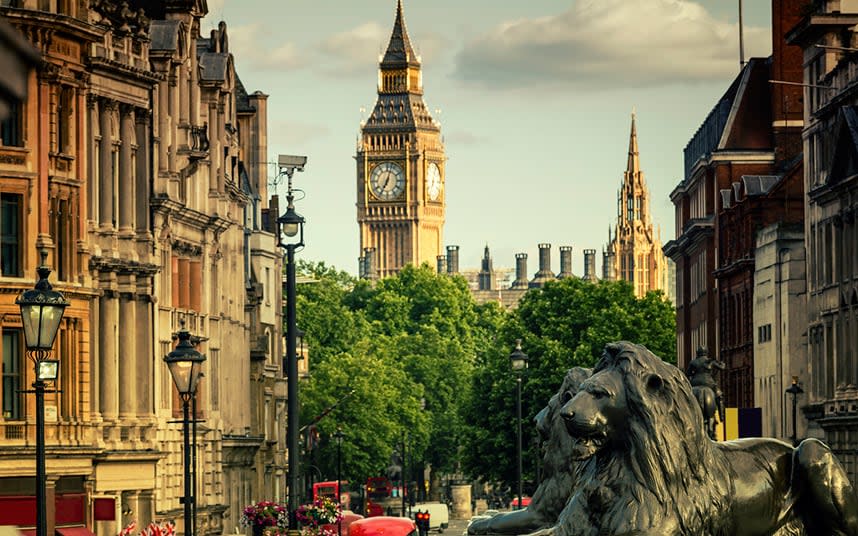
It’s easy to forget, rushing from A to B, to pay attention to our surroundings. Most of us, our attention glued to phone screens, in our own world as we amble along the pavement, would be surprised by what we notice simply by glancing up.
We might think of London’s 2,000 years of history as hiding below ground, ruins, tunnels and sewers. But we should also remember that plenty of our heritage is written into the fabric of buildings that still line our streets.
Maybe it’s an architectural detail that affords a clue to a past function, or a faded sign that hints at old traditions. It might be a sculpture or etched name that reveals previous residents, but on every street across the capital there are stories to discover. If you’re not looking up, you’re missing out.
Seven historic wonders we miss when we fail to raise our gaze
Admiralty Arch’s spare nose
A favourite urban myth surrounds this peculiar appendage underneath Admiralty Arch.
The claim goes it’s a spare nose for Nelson atop his column, one that soldiers on horseback tweak for good luck when they pass. Sorry to break it to you you, but that’s just not true.
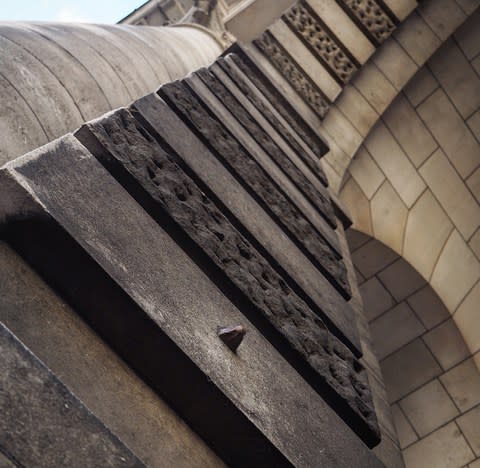
The person to thank is Rick Buckley, an artist who embarked on a secret spree, pasting casts of his nose across central London in 1997.
The reason? A tongue-in-cheek poke at the ever-increasing surveillance of Londoners. Also, because he simply wanted to see what he could get away with.
Most of the 30 or so noses he installed were removed, but there’s still at least seven in the Soho area.
The Philpot Lane Mice
These are tricky to spot, even when you know what you’re looking for, but look up at the (newly refurbished) building on the corner of Philpot Lane. Amidst the other decoration you can just about see two brown splodges with a yellow one in between.
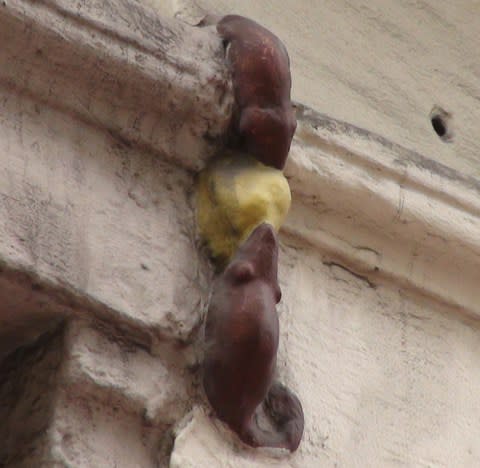
The story goes that in 1862, with the building under construction, an argument broke out between two workmen, one accusing the other of stealing his packed lunch. The debate got heated and turned violent, with one eventually being pushed to his death to the street below.
Unfortunately they later found the true culprit behind the cheese sandwich theft: a humble mouse. And so these two mice, fighting over a bit of cheese, were added as a memorial by fellow workmen.
Parliament Square’s traffic light
It’s understandable that in Parliament Square, distracted by the Houses of Parliament and Westminster Abbey, that a small sign would go unnoticed.

But the green plaque here recalls a huge shift in London’s transport history: the rough location of the first ever traffic light, invented by John Peake Knight and installed nearby on December 9 1868.
Sadly it wasn’t particularly useful, relying on an officer to be stationed nearby, moving handles to change the gas-powered lights from green to red. After a gas leak and small explosion it was removed until a better design was approved.
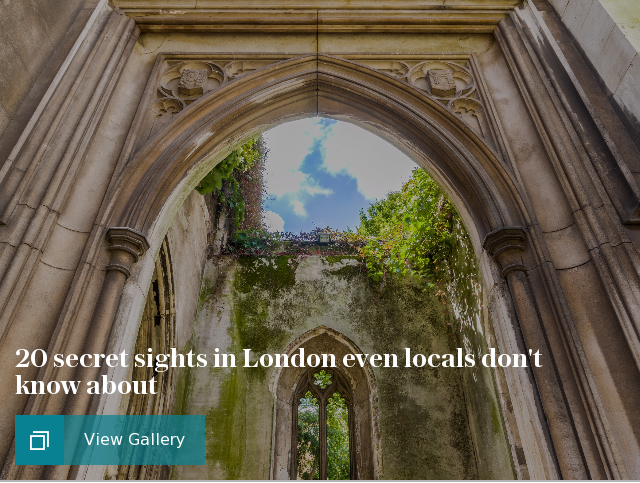
Oxford Street’s beavers
Amid the bustle of Oxford Street, drag your eyes above shop level and there’s history to be found.
Above 105-109 - today home to a Tiger and Foot Locker - you’ll spot some surprising furry creatures, one at the very top showing a shield with an ‘H’.

They’re here because the building - known as Beaver Building - was once Henry Heath’s hat factory, established in 1822 which used the fur of beaver otters, hares and musk rats to make top hats.
As the fashion for hat-wearing declined, Henry Heath went out of business in the 1930s, so now it’s only these doomed animals that serve as a reminder.
Spitalfields’ call for order
On the side of Christ Church Spitalfields is an old painted sign that reads ‘Commit No Nuisance’, another of London’s most delightful ‘ghost signs’ (a name given to the city’s faded advertisements). This command meant something quite specific for its Victorian targets. Commit no nuisance is literally a warning not to urinate/defecate/fornicate.
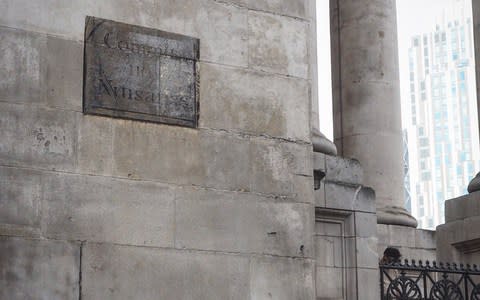
It might come as a surprise that the church needed to spell this out, however, one needs to bear in mind that the Ten Bells pub is opposite. Happily serving East London since 1755 (and with handy upstairs rooms used by 19th century local prostitutes and their clients - including Jack the Ripper), it seems residents needed a sharper reminder now and again.
The Cornhill devils
Most historic secrets tend to delight, but these figures in the City were intended to terrify.
Glaring down at workers in London’s financial centre from Cornhill are two devils, mouths agape and appearing ready to pounce.
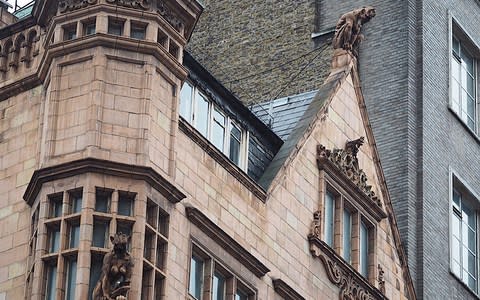
They were added by Ernest Augustus Runtz, the architect of numbers 54-55 in 1893, after a spat with his neighbour, the vicar of St Peter’s Cornhill. The story goes that Runtz allowed his original design to stray onto the vicar’s property, prompting the Church to demand that the plans be changed.
The amendments frustrated Runtz and added cost to his project. As a parting shot, Runtz finished off his work with these haunting guardians of the underworld, destined to glare forever down at the church.
Tower Bridge’s secret chimney
Even with London’s best-known sights, it’s easy to miss a sneaky detail when not looking closely.
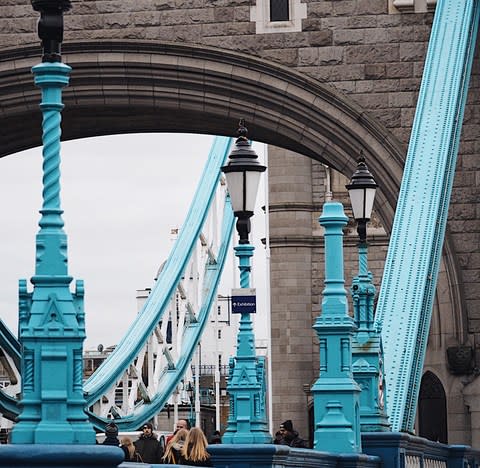
This is exactly the case for Tower Bridge, specifically the rows of bright blue lampposts on the North bank of the river. Look along the line and you’ll soon see the odd one out, a Victorian attempt at disguising a cast-iron chimney.
It used to be connected to a coal fire in the Royal Fusiliers room that warmed the cockles of the guards on duty. However, after the Clean Air Act of 1956 the chimney was blocked off, with no one bothering to add a faux gas lamp on top.

Katie Wignall is a qualified Blue Badge Tourist Guide and founder of Look Up London (lookup.london), a history blog and walking tours company.



